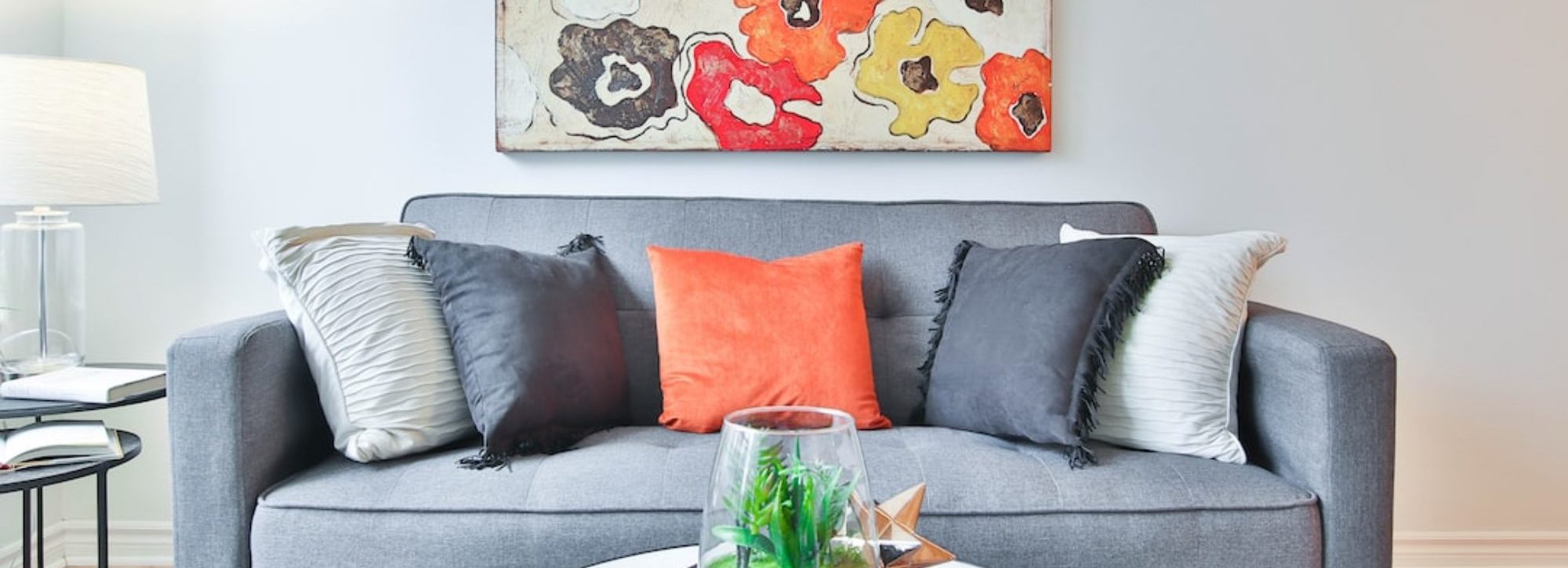Introduction to the Significance of Home Staging
Home staging plays a pivotal role in the real estate market by creating a positive first impression on potential buyers, setting the stage for a successful sale. Staged homes have a proven track record of selling faster and for higher prices compared to non-staged properties, making it a valuable investment for sellers looking to maximize their returns. For example, consider a study that revealed staged homes sold for an average of 17% more than non-staged homes, showcasing the financial benefits of this practice. Moreover, home staging is essential in helping buyers visualize the potential of the space and emotionally connect with the property, increasing the likelihood of them making an offer. By presenting a well-staged home, sellers can create a compelling narrative that resonates with buyers and ultimately leads to a successful sale.
 The Impact of Curb Appeal in Home Staging
The Impact of Curb Appeal in Home Staging
Enhancing curb appeal goes beyond just aesthetics; it can significantly influence a property’s perceived value and attractiveness to potential buyers. Research has shown that investing in curb appeal can increase a property’s value by up to 7%, underscoring the importance of making a strong first impression. For instance, by implementing simple upgrades such as landscaping, exterior painting, and outdoor furniture, sellers can create an inviting and visually appealing exterior that entices buyers from the moment they arrive [1]. Additionally, maintaining a well-kept exterior not only enhances the overall look of the property but also signals to buyers that the home has been well cared for, instilling confidence in their decision to consider the property further [1].
Decluttering and Depersonalizing Strategies
Depersonalizing a home and decluttering are strategic tactics in preparing a property for sale, as they help create a neutral canvas that appeals to a broad range of buyers. By removing personal items and excess clutter, sellers can allow potential buyers to envision themselves living in the space, fostering a sense of connection and making it easier for them to see the property’s potential. Research indicates that decluttering can lead to a quicker sale and a higher selling price, emphasizing the tangible benefits of this practice. Moreover, by streamlining the space and removing distractions, sellers can highlight the key features of the home, making it more appealing to buyers who are visualizing their future in the property.
Strategic Furniture Arrangement Techniques
The strategic placement of furniture can transform the look and feel of a room, maximizing its space and appeal to potential buyers. Research-based tips suggest positioning furniture to accentuate the room’s best features and create a sense of flow and functionality. For example, by arranging furniture to define specific areas within a room, such as a reading nook or entertainment zone, sellers can help buyers envision how they would utilize the space, enhancing its overall appeal. Statistics show that well-arranged furniture can make a room feel up to 30% larger, emphasizing the impact of thoughtful furniture arrangement on the perception of space and functionality.
Color Psychology and Lighting Effects
Neutral colors and proper lighting are fundamental elements in creating a welcoming and visually appealing environment during home staging. Neutral color palettes provide a versatile backdrop that appeals to a wide range of tastes and allows potential buyers to envision their own style in the space. Additionally, adequate lighting is essential in accentuating the features of the home and creating a warm, inviting atmosphere. Homes that are well-lit tend to sell faster than those with poor lighting, highlighting the importance of this aspect in the staging process. Studies have shown that well-lit spaces not only enhance the overall aesthetic appeal of a property but also contribute to a positive buyer experience, increasing the likelihood of a successful sale.
 Leveraging Current Home Staging Trends for Success
Leveraging Current Home Staging Trends for Success
Staying abreast of current home staging trends can give sellers a competitive edge in the real estate market and help attract modern buyers. For instance, incorporating sustainable materials and biophilic design elements can appeal to eco-conscious buyers and create a connection to nature within the home. Furthermore, integrating smart home features and technology advancements can enhance the property’s desirability and cater to the preferences of tech-savvy buyers. Research indicates that homes following current trends spend less time on the market and receive higher offers, underscoring the impact of staying updated with industry trends on the successful sale of a property. By aligning with contemporary staging practices, sellers can position their homes as desirable and relevant in today’s competitive real estate landscape.
Budget-Friendly DIY Home Staging Tips
Staging a home on a budget requires creativity and resourcefulness to achieve a visually appealing presentation without incurring substantial costs. One effective strategy is to repurpose existing furniture by giving it a fresh look through painting or reupholstering, as this can revitalize the space without the need for new purchases. For example, consider transforming an old bookshelf into a stylish storage unit by adding decorative baskets and organizing books and accessories neatly to showcase its functionality and aesthetic appeal. Additionally, focusing on small updates such as replacing outdated hardware, adding new throw pillows, or incorporating inexpensive decor accents can make a significant impact on the overall look and feel of the home.
Moreover, creating a cohesive style throughout the home by coordinating colors, patterns, and textures can enhance the visual flow and appeal of the property. By selecting a consistent color scheme and incorporating complementary decor elements in each room, sellers can create a harmonious environment that resonates with potential buyers. For instance, pairing matching curtains with throw pillows in the living room or using cohesive artwork and accessories throughout the home can help establish a unified design theme that enhances the overall presentation. Embracing do-it-yourself (DIY) staging not only allows sellers to showcase their creativity and personal style but also enables them to save on staging expenses while maximizing the property’s marketability.
Furthermore, leveraging cost-effective strategies such as deep cleaning, decluttering, and enhancing curb appeal can significantly improve the property’s overall appeal without breaking the bank. For example, investing time in thorough cleaning, organizing, and landscaping can freshen up the home and make a positive impression on potential buyers. By focusing on simple yet impactful updates, sellers can transform their property into a market-ready home that attracts buyers and stands out in a competitive real estate market.
Avoiding Common Home Staging Mistakes
Steering clear of common home staging mistakes is crucial to presenting a property in its best light and appealing to a broad range of potential buyers. Neglecting to update outdated fixtures, failing to address odors, or over-personalizing the space are pitfalls that sellers should avoid during the staging process. For instance, replacing old, worn-out light fixtures with modern alternatives can instantly elevate the look and feel of a room, making it more appealing to buyers. Similarly, addressing any unpleasant smells by thoroughly cleaning and deodorizing the space can create a more inviting atmosphere for property viewings.
Another critical mistake to avoid is over-personalizing the space, as this can detract from the property’s universal appeal and hinder buyers from envisioning themselves living in the home. Instead of showcasing personal photographs or unique decor items, opt for neutral artwork and accessories that create a neutral and inviting ambiance. By creating a space that resonates with a broad audience, sellers can increase the property’s marketability and attract more potential buyers, ultimately leading to a successful sale.
 Professional vs. DIY Home Staging Considerations
Professional vs. DIY Home Staging Considerations
The decision between hiring professional staging services or opting for a do-it-yourself (DIY) approach depends on various factors, including budget, time constraints, and the desired outcome of the property sale. While professionally staged homes often command higher selling prices and sell faster, DIY staging can be a cost-effective alternative that allows sellers to showcase their creativity and personalize the staging process. For instance, a homeowner with a limited budget may opt for DIY staging to save on expenses while still presenting the property in a visually appealing manner. On the other hand, a seller looking to maximize the property’s marketability and attract a wider range of buyers may choose professional staging services to achieve optimal results.
Moreover, considering the local real estate market dynamics and the property’s unique selling points can help sellers determine the most suitable staging approach for their specific needs. For example, a property in a competitive market may benefit from professional staging to stand out among similar listings and attract potential buyers efficiently. In contrast, a seller in a less competitive market or with a keen eye for design may successfully execute a DIY staging strategy that resonates with buyers and leads to a successful sale. By weighing the advantages and limitations of professional and DIY staging methods, sellers can make an informed decision that aligns with their goals and budget while maximizing the property’s appeal to potential buyers.
Showcasing Home Staging Success Stories
Real-life success stories of staged properties serve as compelling examples of the transformative power of staging in the real estate market. For instance, consider a property that underwent strategic staging transformations, such as decluttering, furniture rearrangement, and neutral decor updates, resulting in multiple offers and a quick sale above the asking price. This success story illustrates how effective staging can enhance a property’s marketability and attract motivated buyers. Additionally, showcasing before-and-after photos of staged properties can visually demonstrate the impact of staging on the property’s presentation and buyer appeal.
Furthermore, testimonials from satisfied sellers who have experienced the benefits of staging firsthand can provide valuable insights into the positive outcomes of staging a home before listing it for sale. By sharing firsthand accounts of sellers who have seen increased offers, reduced time on the market, and overall success through staging, Arbor Move Real Estate Team aims to inspire other sellers to consider the benefits of staging in their property selling journey. These success stories not only highlight the tangible benefits of staging but also underscore the value of partnering with a professional team that can deliver tailored staging solutions for a successful property sale.
In conclusion, partnering with Arbor Move Real Estate Team can significantly enhance the home staging experience and lead to successful property sales that exceed expectations. By leveraging the team’s expertise, professional resources, and proven track record in the real estate industry, sellers can streamline their selling process, eliminate stress, and achieve optimal results. From personalized staging strategies to top-tier support throughout the sales process, Arbor Move offers a comprehensive approach to staging that maximizes property marketability and attracts motivated buyers. To explore how Arbor Move Real Estate Team can elevate your home staging experience and help you achieve a successful property sale, visit their website at Arbor Move Real Estate Team and take the first step towards a seamless and rewarding selling journey.

